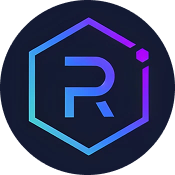When selecting a blockchain platform for decentralized applications, investors and developers find themselves at the crossroads of innovation and scalability. Avalanche and Polygon stand out as two of the most prominent contenders, each boasting unique architectural designs, consensus mechanisms, and ecosystem strengths. This comparison aims to dissect their core technologies, use cases, and future prospects, enabling informed decisions in the fast-paced world of crypto development.
Short on time? Jump to Avalanche vs Polygon Comparison
Understanding Avalanche and Polygon ?
Avalanche is a highly scalable blockchain platform renowned for its innovative consensus protocol, which combines aspects of classical and Nakamoto consensus to achieve high throughput and rapid finality. It features a multi-chain architecture with three core blockchains—X-Chain, C-Chain, and P-Chain—each serving distinct functions such as asset management, smart contracts, and validator coordination. Avalanche’s architecture enables it to process thousands of transactions per second at low latency, making it suitable for enterprise use cases and DeFi applications.
Polygon, on the other hand, functions primarily as a Layer 2 scaling solution for Ethereum, utilizing a multi-layer architecture that includes the Ethereum mainnet, Heimdall, and Bor layers. Its proof-of-stake consensus mechanism ensures security and decentralization while maintaining high scalability and low transaction fees. Polygon’s ecosystem hosts over 19,000 decentralized applications, ranging from DeFi protocols like Aave and Uniswap to NFT marketplaces such as OpenSea, positioning it as a vital infrastructure for Web3 developers seeking Ethereum compatibility.
Both platforms have demonstrated rapid growth through strategic partnerships and technological upgrades. Avalanche’s recent Avalanche9000 upgrade has significantly improved its scalability and cost-efficiency, culminating in the successful launch of Avalanche9000 mainnet. Polygon continues to innovate with protocols like Polygon 2.0 and its AggLayer ZK-proof aggregation, aiming to further enhance scalability, interoperability, and security across multiple blockchain networks.
While Avalanche emphasizes high throughput, fast finality, and enterprise adoption, Polygon focuses on providing a versatile scaling infrastructure that complements Ethereum’s ecosystem. Their distinct architectural choices reflect different priorities—Avalanche’s multi-chain approach versus Polygon’s layered architecture—yet both aim to address Ethereum’s limitations and expand blockchain utility.
Key Differences Between Avalanche and Polygon
Consensus Mechanism
- Avalanche: Avalanche employs a unique Avalanche consensus protocol that combines repeated randomized subsampling of validators to achieve high throughput and near-instant finality. This hybrid approach ensures robust security while maintaining scalability, allowing the network to process thousands of transactions per second with low latency.
- Polygon: Polygon utilizes a modified proof-of-stake (PoS) consensus mechanism based on a set of validators staking MATIC tokens. This approach provides a balance between decentralization and efficiency, enabling high transaction throughput on its sidechains while maintaining a strong link to Ethereum’s security model.
Architecture
- Avalanche: Avalanche’s architecture is multi-chain, comprising three specialized blockchains—X-Chain for asset transfer, C-Chain for smart contracts, and P-Chain for validator and subnet management. This design allows for concurrent processing of different types of transactions, optimizing scalability and flexibility.
- Polygon: Polygon operates as a multi-layer system with the Ethereum mainnet at its core, supported by the Heimdall layer (proof-of-stake checkpointing) and the Bor layer (block production). This layered approach leverages Ethereum’s security while providing scalable sidechains tailored for specific use cases.
Scalability and Performance
- Avalanche: Avalanche’s consensus protocol and multi-chain setup enable it to handle thousands of transactions per second with near-instant finality, making it highly suitable for enterprise applications and DeFi platforms that demand high throughput.
- Polygon: Polygon’s sidechain architecture allows for rapid transaction processing with low fees, supporting over 19,000 dApps. Its scalability solutions, including zkEVM and other optimistic rollups, aim to further boost performance while maintaining Ethereum compatibility.
Ecosystem and Adoption
- Avalanche: Avalanche has gained adoption across enterprises and DeFi projects, with partnerships like J.P. Morgan and Franklin Templeton, and a growing validator network that enhances security and decentralization. Its recent upgrades have attracted institutional interest and increased TVL.
- Polygon: Polygon boasts a vast ecosystem with thousands of dApps, including major DeFi protocols and NFT platforms. Its interoperability with Ethereum and ongoing protocol innovations, like Polygon 2.0, make it a favorite among developers seeking low-cost, scalable solutions.
Use Cases
- Avalanche: Avalanche excels in enterprise solutions, DeFi, and gaming, with notable projects such as the California DMV digitizing vehicle titles and AAA games like 'Off the Grid' leveraging its high performance capabilities.
- Polygon: Polygon is widely used for DeFi, NFT marketplaces, and gaming within the Ethereum ecosystem. Its compatibility with existing Ethereum dApps and cost-effective transactions have made it a preferred platform for developers and users alike.
Avalanche vs Polygon Comparison
| Feature | ✅ Avalanche | ✅ Polygon |
|---|---|---|
| Consensus Mechanism | Avalanche uses Avalanche consensus for high throughput and quick finality. | Polygon employs a modified proof-of-stake system with validator staking. |
| Architecture | Multi-chain with X, C, and P chains for specialized functions. | Layered architecture with Ethereum mainnet, Heimdall, and Bor layers. |
| Transaction Speed | Handles thousands of TPS with near-instant finality. | Supports high TPS through sidechains, with ongoing zk-rollup integrations. |
| Ecosystem Size | Growing enterprise and DeFi ecosystem with strategic partnerships. | Over 19,000 dApps, extensive DeFi and NFT integrations. |
| Use Cases | Enterprise solutions, DeFi, gaming, asset digitization. | DeFi, NFTs, gaming, scalable dApp hosting on Ethereum layer. |
Ideal For
Choose Avalanche: Ideal for enterprises, DeFi projects, and applications requiring high throughput and fast finality.
Choose Polygon: Best suited for developers seeking Ethereum-compatible scaling solutions with low fees and extensive dApp support.
Conclusion: Avalanche vs Polygon
Both Avalanche and Polygon have carved out significant niches within the blockchain ecosystem, driven by their innovative architectures and strategic partnerships. Avalanche’s high-performance, multi-chain approach offers unparalleled scalability and security for enterprise and DeFi applications, supported by recent upgrades that enhance network efficiency and resilience.
Polygon’s layered architecture and vast ecosystem make it an attractive choice for developers aiming to build scalable, Ethereum-compatible dApps with low transaction costs. Its ongoing protocol innovations, including zkEVM and protocol aggregators, promise to further cement its role as a foundational layer for Web3 growth. Ultimately, the choice depends on specific project needs—whether prioritizing high throughput and security or ecosystem compatibility and low fees.






